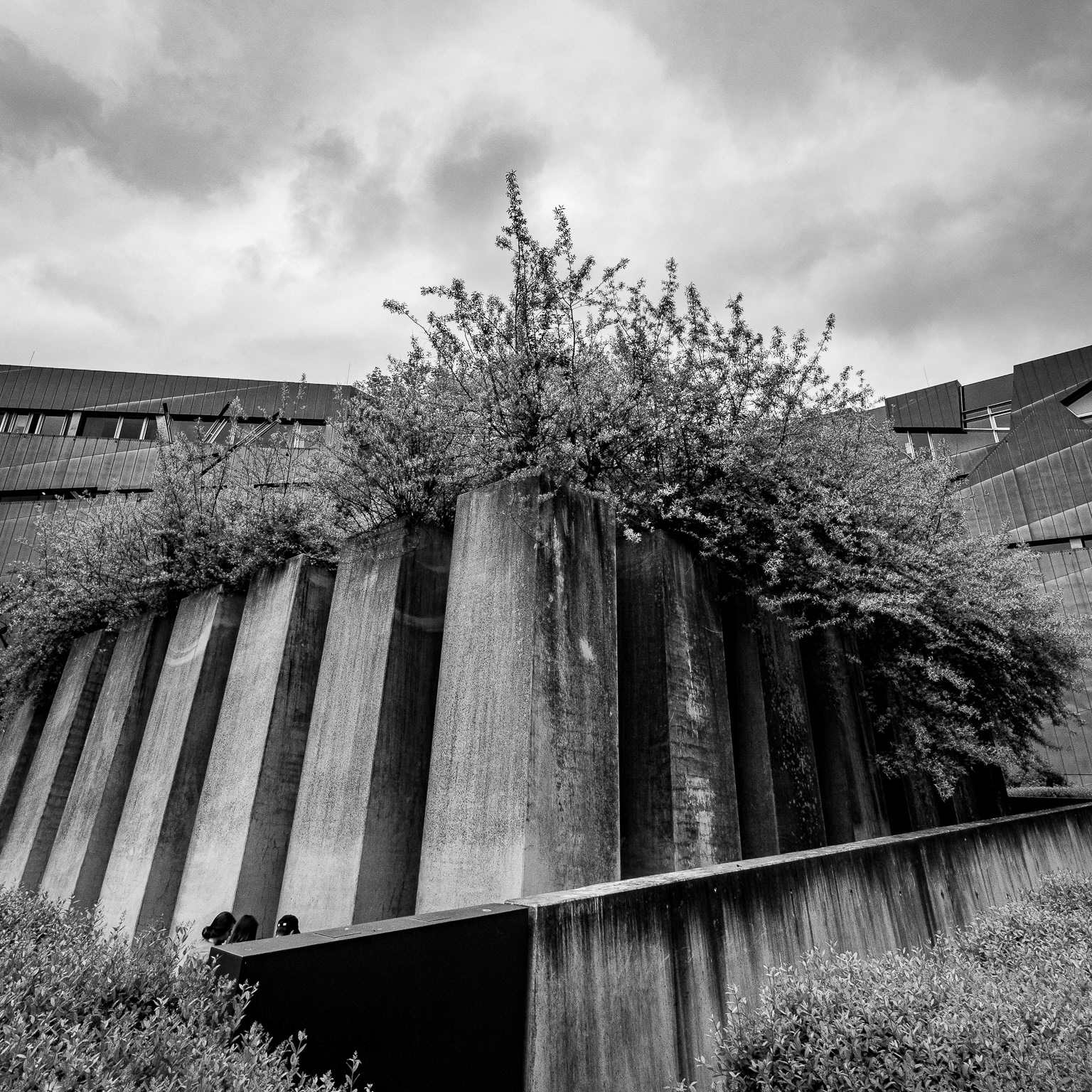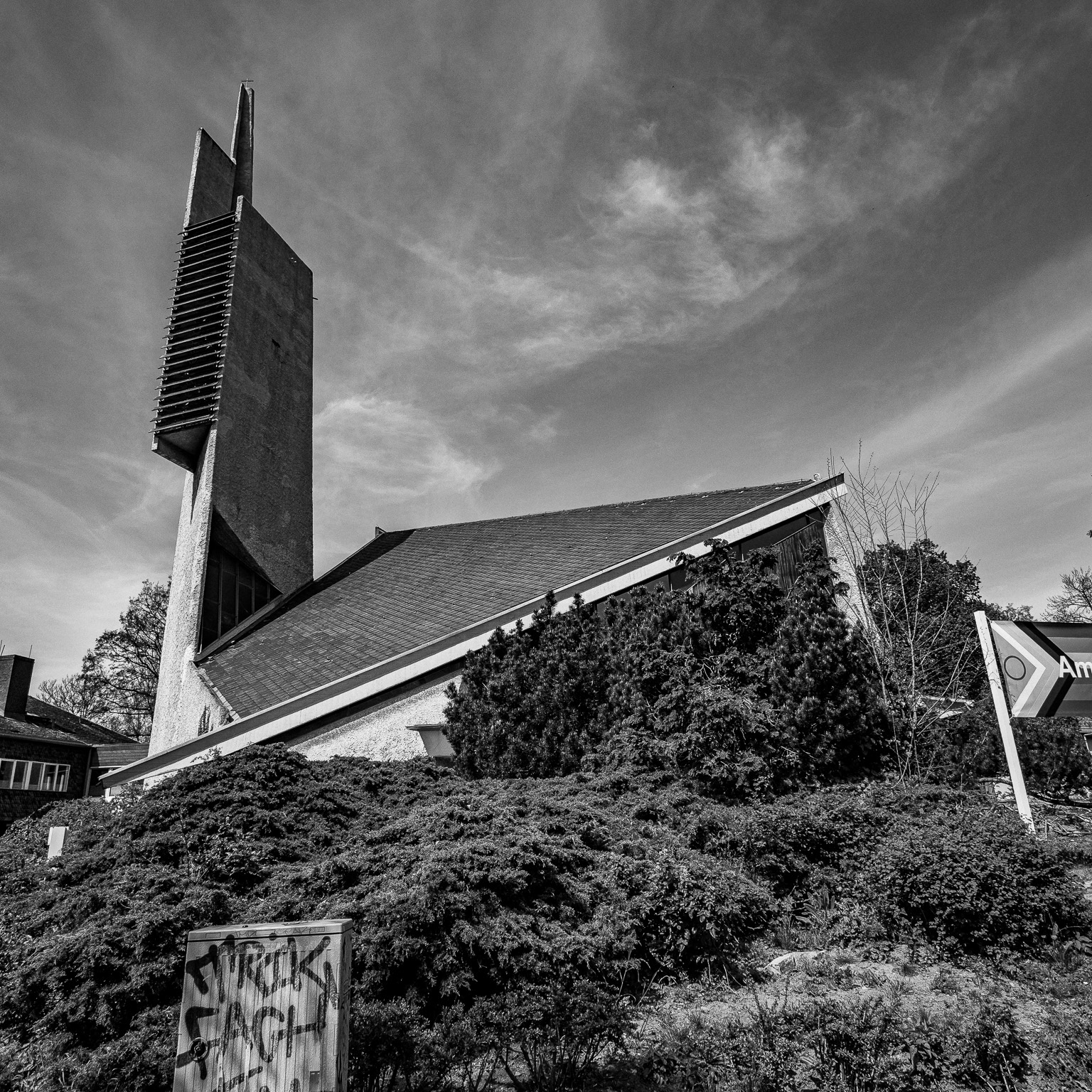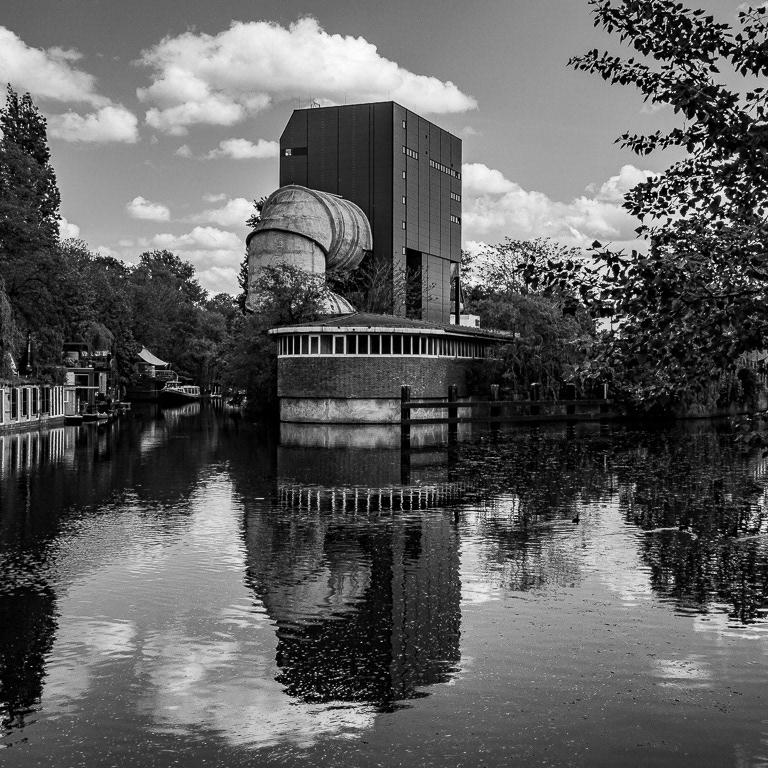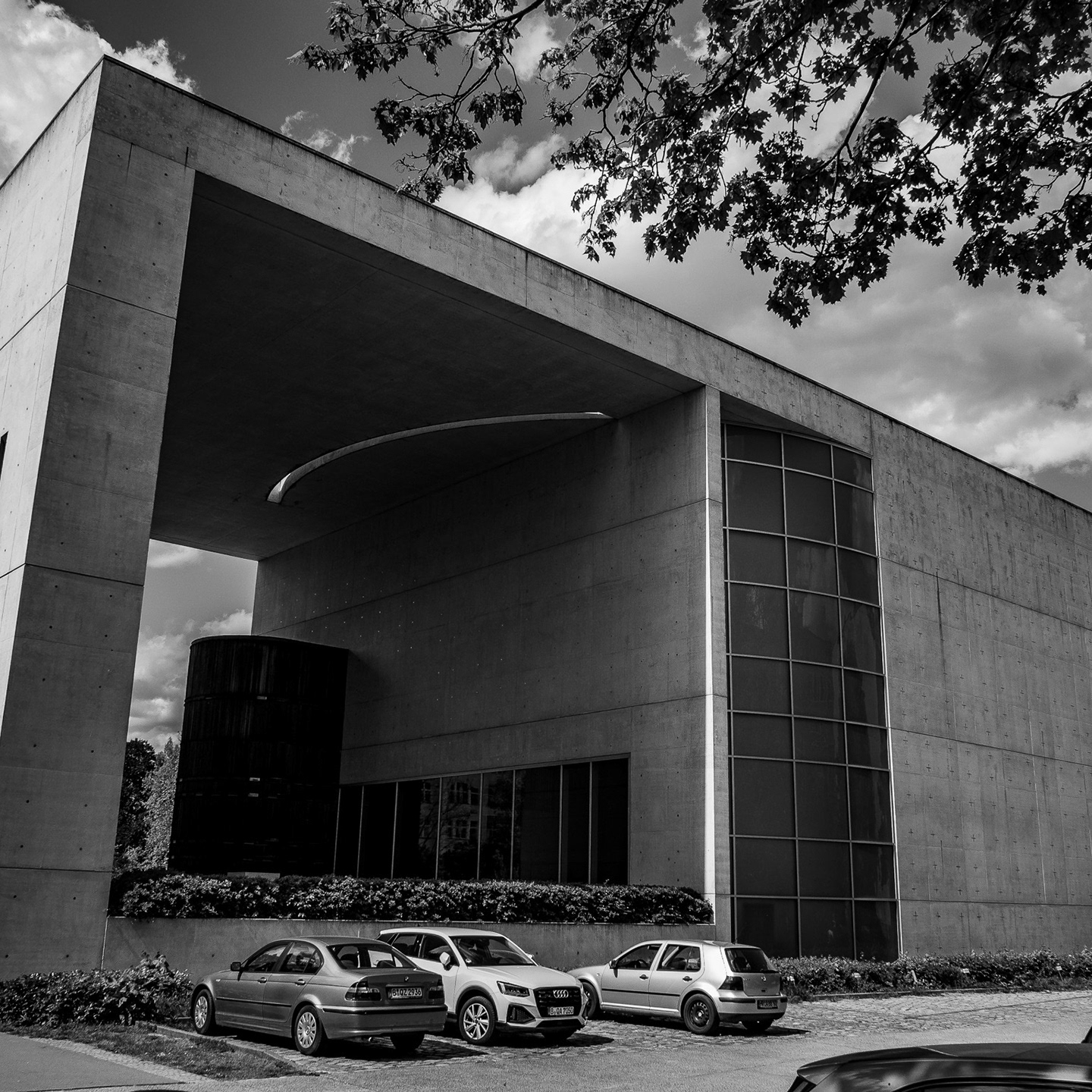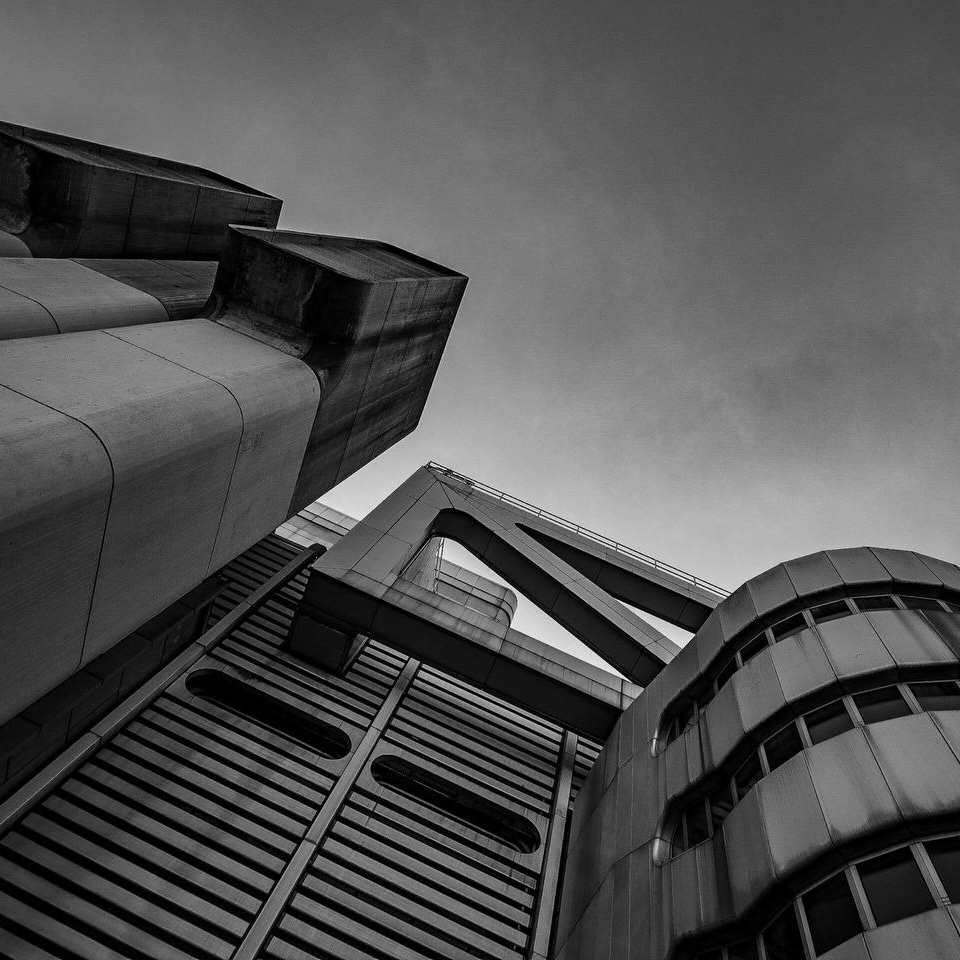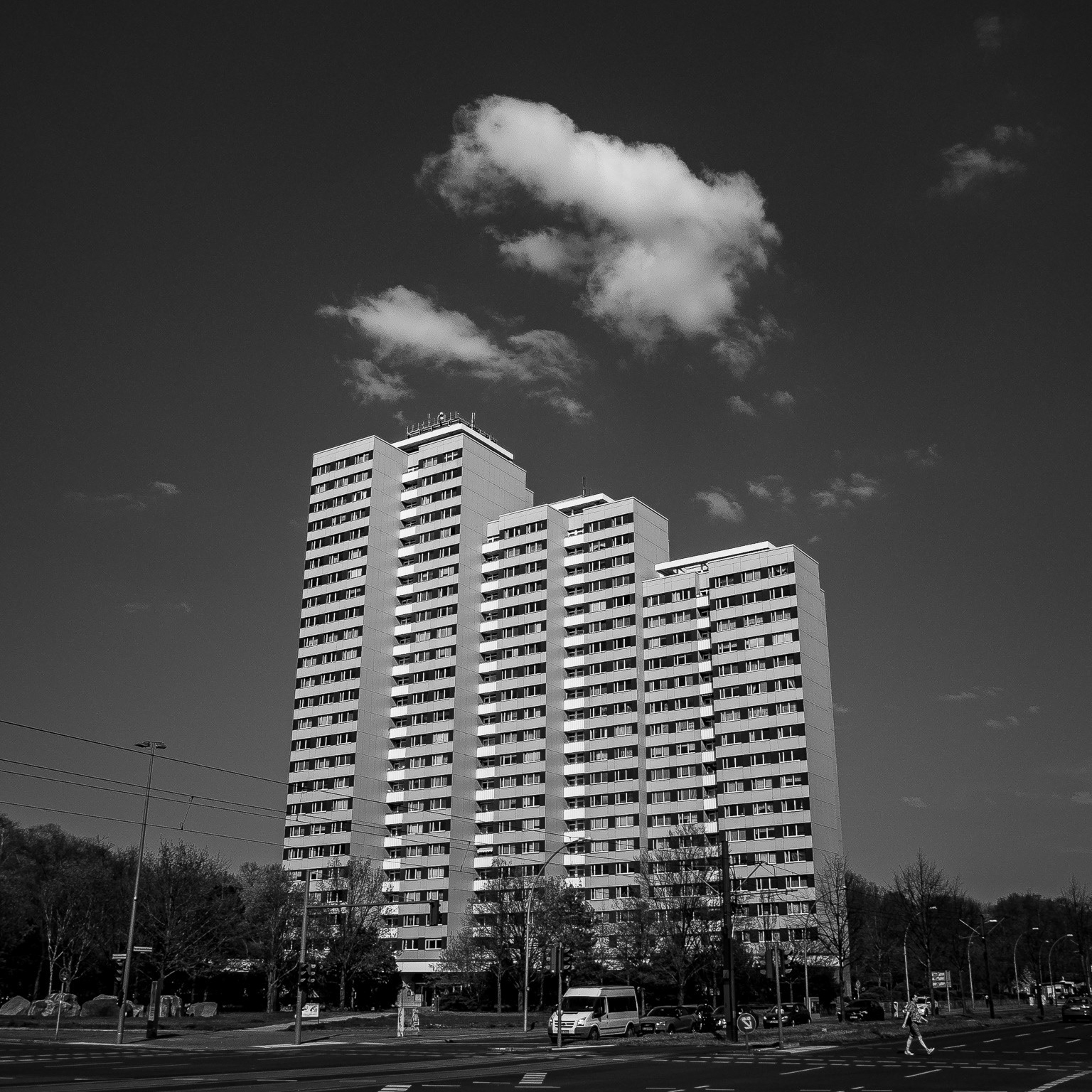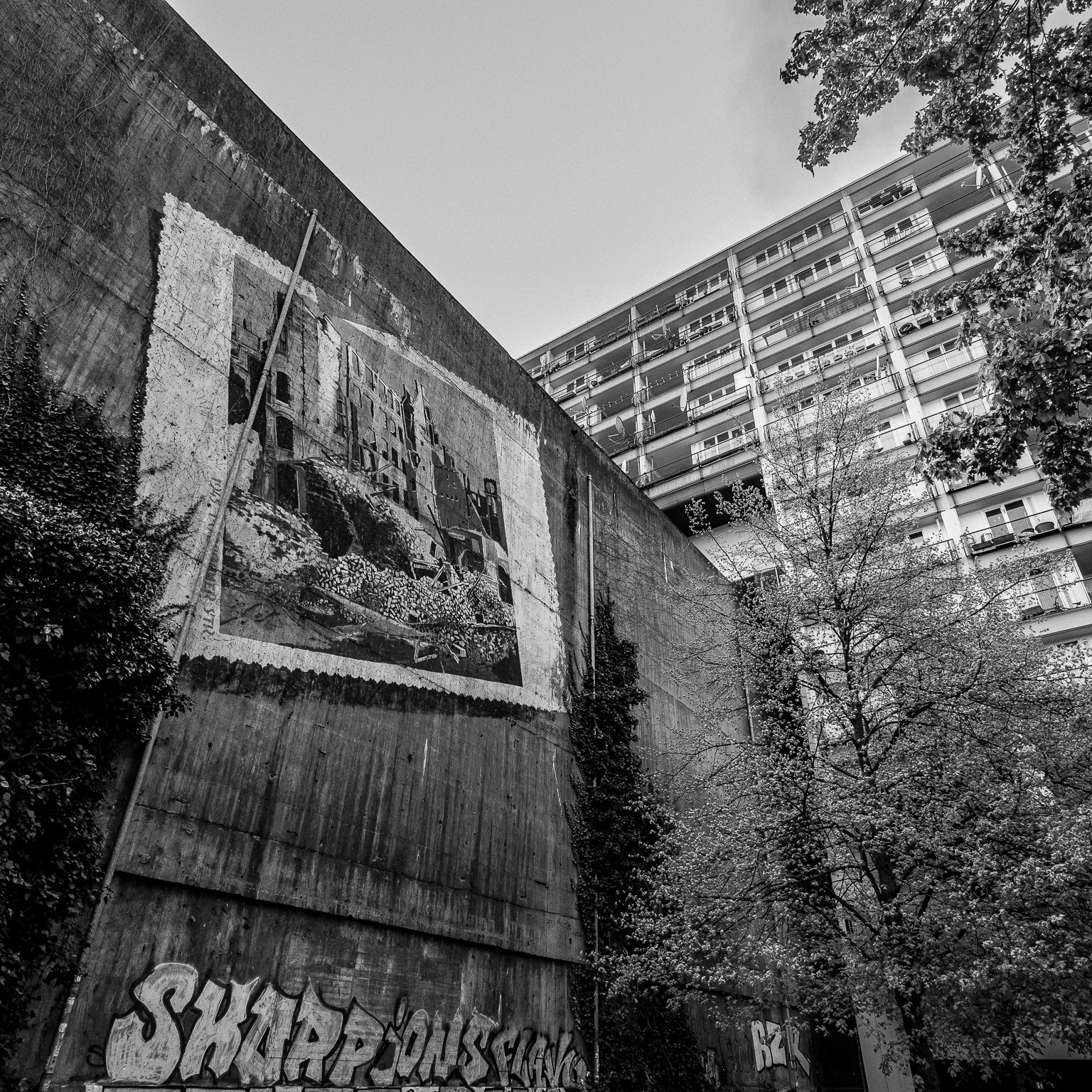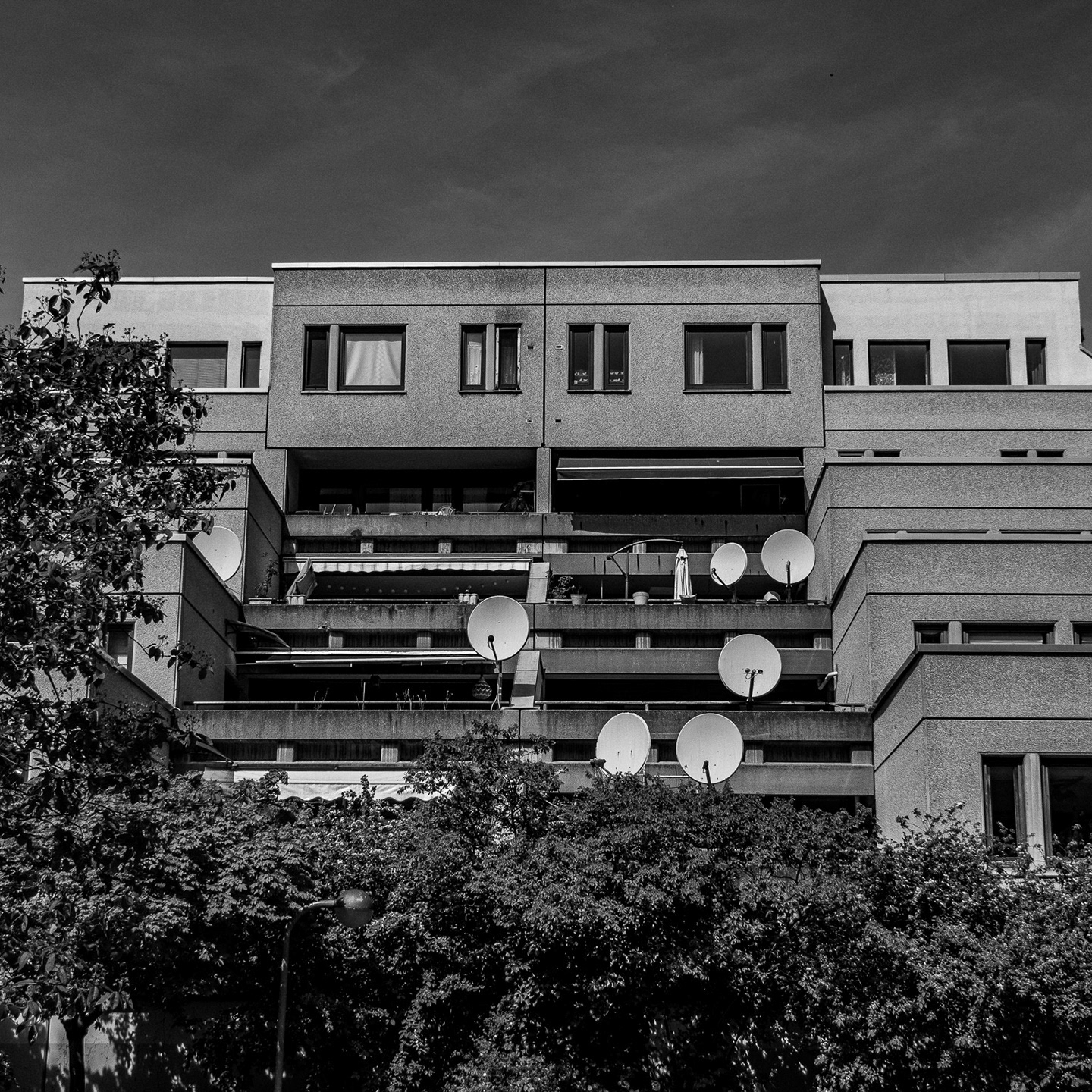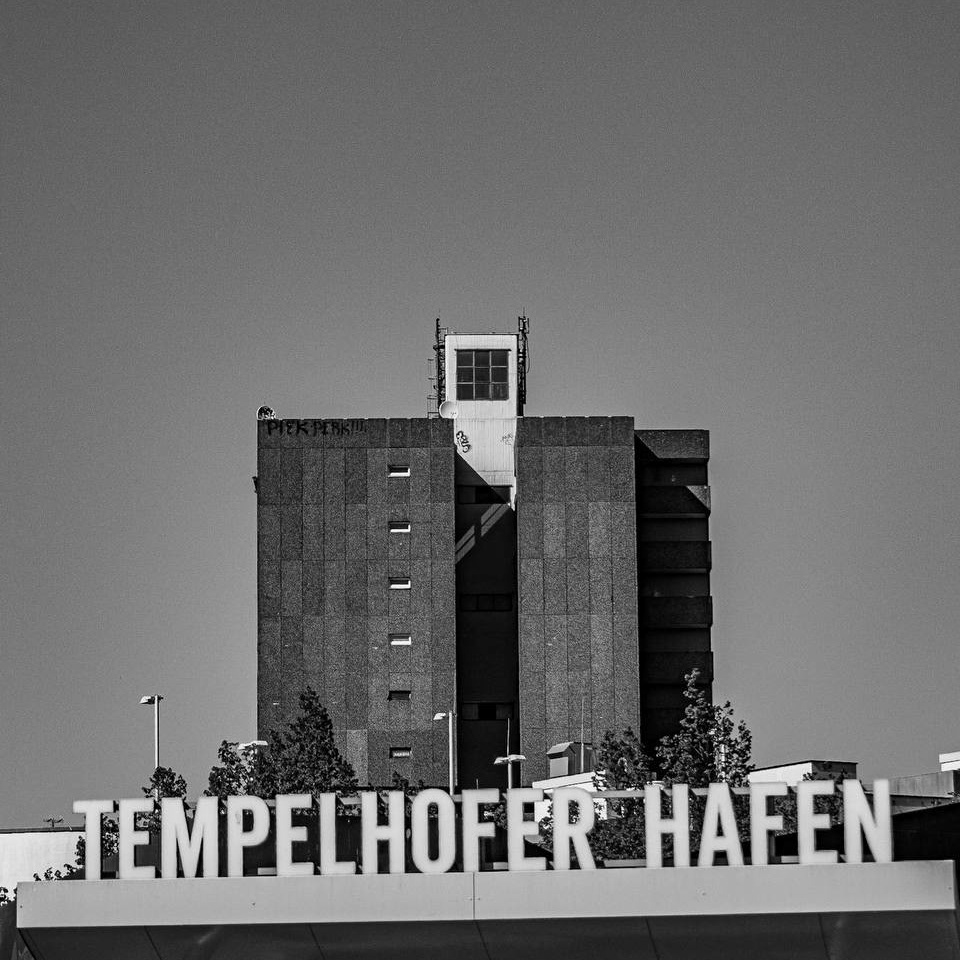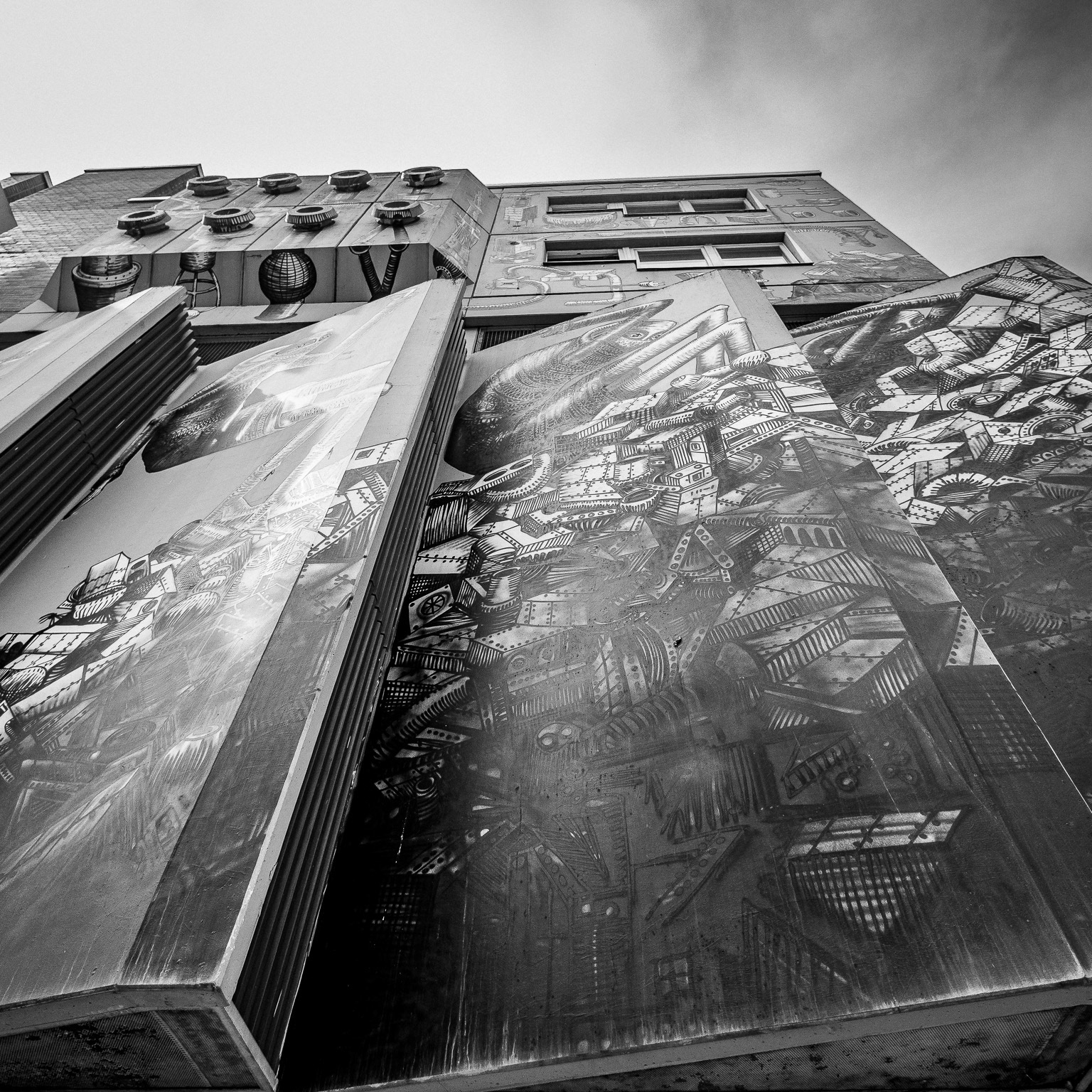1988 | John Hejduk
Charlottenstraße 97, Berlin Kreuzberg
In the 1980s, Berlin's urban redevelopment highlighted neighborhoods like Tiergarten, Kreuzberg, and Tegel. During the 1987 International Building Exhibition (IBA 87), notable architects, including John Hejduk from the New York Five, showcased their designs. Hejduk, who was renowned for his architectural theories and tenure at The Cooper Union, had few built projects worldwide, with the residential complex at Charlottenstraße 96–98 in Berlin being one of them.
This project in Kreuzberg's southern Friedrichstadt featured a distinctive tower amidst two five-story residential buildings, integrating seamlessly with the existing structures and opening up to Besselpark to the south. The complex included a series of towers designed for daylight optimization and modern living, originally intended for scholars of the German Academic Exchange Service.
Hejduk's design, known for its minimalistic gray facade and green metal roofs that inverted traditional roof forms, was a statement against the lavish tendencies of Postmodernism. In 2010, despite plans for major modifications that threatened the building's unique features, protests from prominent architects helped preserve Hejduk's original vision. Today, the site remains a testament to his architectural philosophy, unaltered and open for public appreciation.
Source: https://www.visitberlin.de/de/wohnturm-charlottenstrasse
Photos: Eric Bauermeister
